The Top 6 Reasons Your Tomato Plant Leaves Are Turning Yellow
Updated July 21 2020, 12:54 p.m. ET
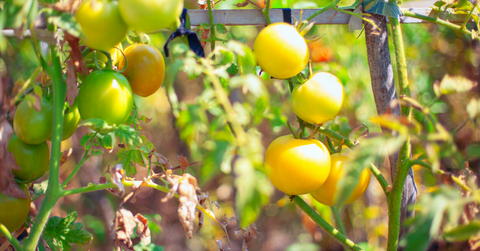
Gardening is a great way to get in touch with nature, relax and unwind, and spend some quality time with yourself or as a family. There’s nothing quite like enjoying something that you’ve grown from seed to stem, stem to fruit or vegetable, or anything in between.
From container to raised beds and traditional gardens, there’s no wrong way to give it a try.
A common first endeavor for aspiring gardeners everywhere is the tomato plant. They tend to do well in different types of environments, and once you’ve got them growing, there’s (almost) no stopping them.
Tomatoes are a popular gardening choice.
As mentioned, tomato plants are typically considered one of the easiest plants to grow and tend to. They’re productive, long-lasting, and actually love the heat.
Plus, if you’ve ever had a garden-fresh tomato — especially one you’ve had a hand in growing — you know how delicious they are! Tomatoes are popular summertime fare, whether on burgers or in salads or salsas.
They can also be canned and preserved for colder months, and used to make fresh, homemade sauces and more.
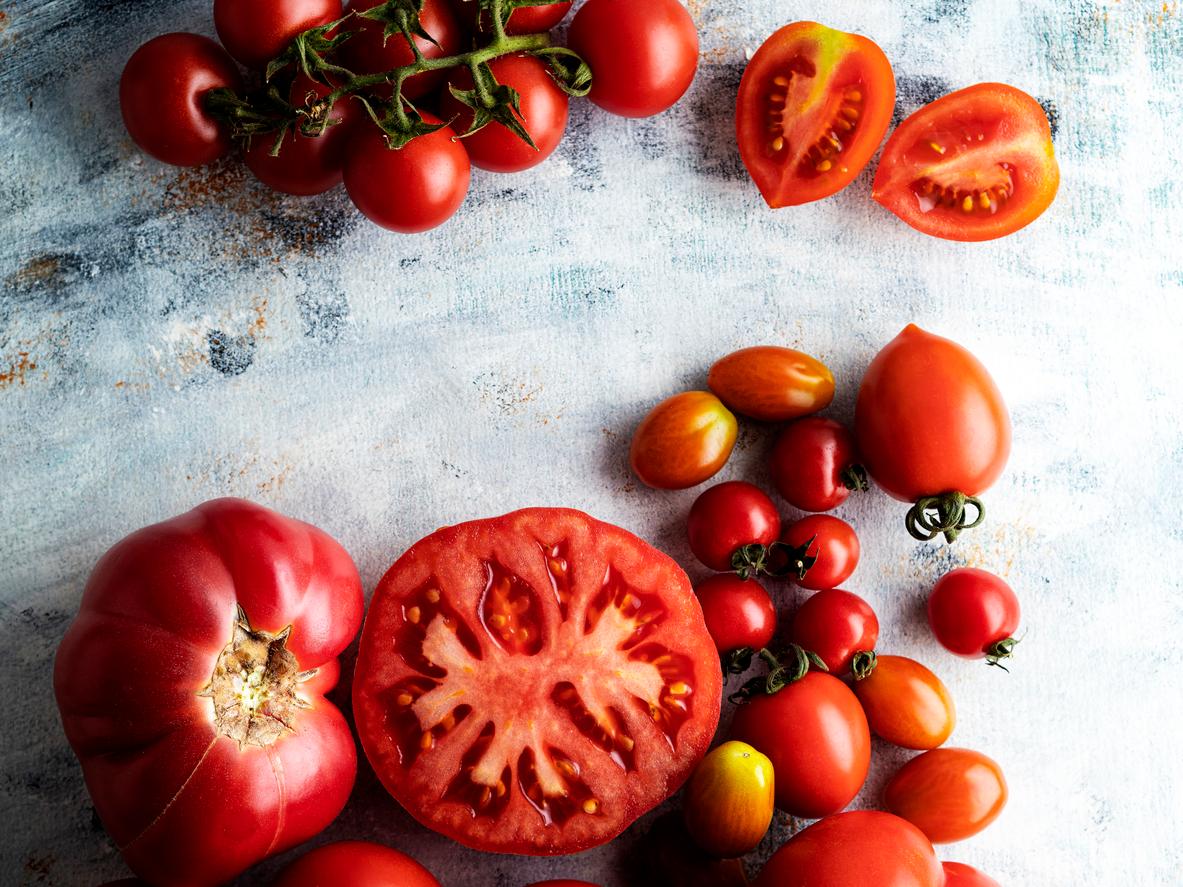
Here’s how to care for transplant tomato plants:
Transfer tomato plants have already started growing, and can either be transferred to your garden, or grown directly in a container with proper drainage.
They still take TLC, but these plants have started growing — likely under optimal conditions and a watchful eye — and are usually a decent size when they’re purchased.
A tomato plant is ready to be transferred to the garden once it’s four to five inches tall, and the temperature stays above 50 degrees Fahrenheit at night, Den Garden shares.
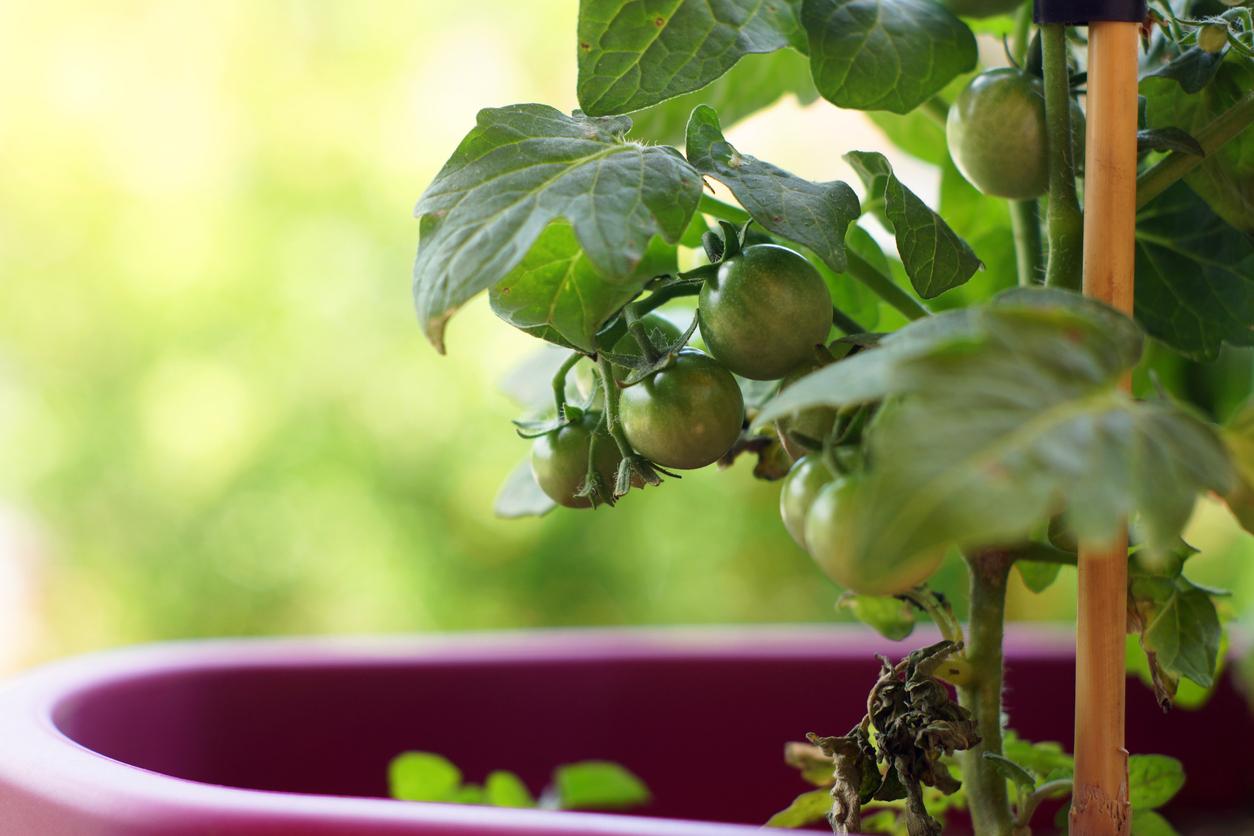
When it comes to growing tomatoes from seeds, the process is a bit different.
One major benefit of growing tomatoes from seeds is there’s more variety. Transplant tomato plants come in a few main variations, but with seeds, there are reportedly more than 7,500 different kinds of tomato seeds out there!
But naturally, the plant hasn’t started to grow, so it’ll take a bit more time to get things up and running.
You’ll want to plant your tomato seeds anywhere from six to eight weeks before you want to move them outdoors, which is a general guideline The Spruce shares.
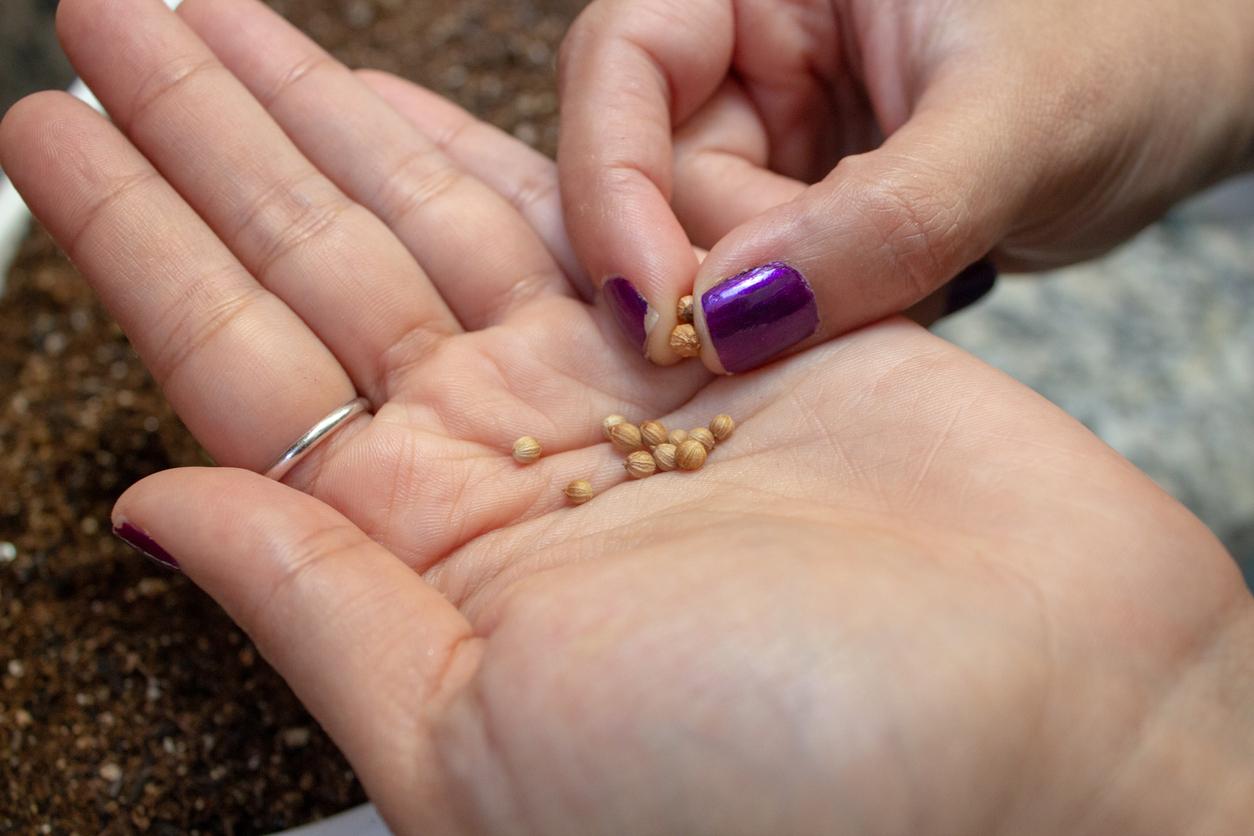
Cherry tomatoes are considered the easiest to grow.
A single cherry tomato plant can produce “a steady crop of bite-sized fruits all season long,” per Good Housekeeping. In fact, they call them the easiest plant you’ll ever grow.
Popular types include the Sweet Million, SunSugar, and Black Cherry heirlooms. Grown from seeds, they typically start to flower within a month, and produce tomatoes a few weeks later.
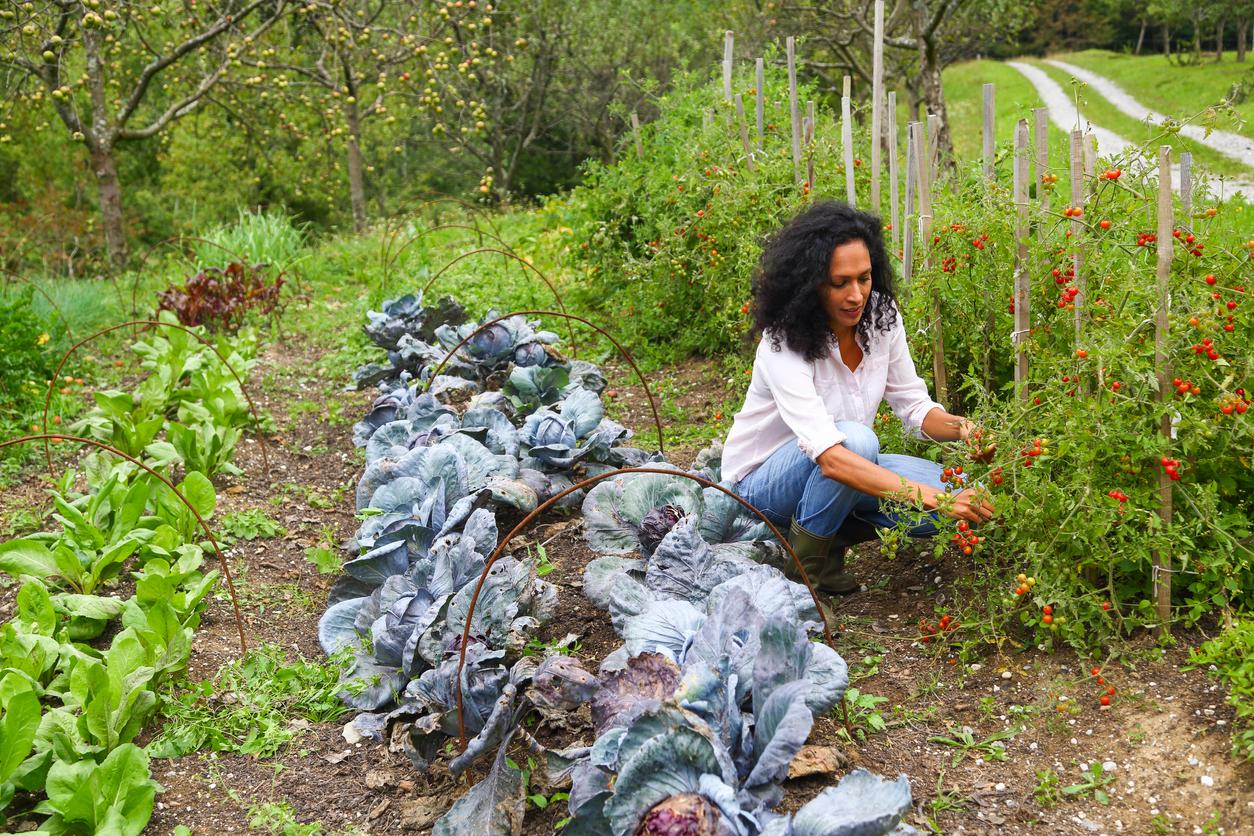
Here’s how to prepare any tomato plant for the great outdoors.
Have you ever heard of hardening? It’s the process of transferring your plant from a container in your house, a greenhouse, or another controlled environment to the space it will live outdoors. This can come as a shock to plants of all types, and tomatoes are included in this group.
Basically, hardening means gradually exposing them to outdoor conditions over a period of a few days to help them thrive once they’re planted, or their container is permanently moved outside.
The tomato experts at Hudson Valley Seed Co. put it like this: “Give them a few days to adjust to the swinging temperatures, harsh sunlight and strong wind by bringing them outside for a few hours, then increasing to half a day, a full day, and finally a day and night.”
It makes sense, but is a step that’s often missed in the gardening process.
Here’s why your tomato leaves are turning yellow.
A common problem that tomato growers face, whether growing from seed or as a store-bought transplant plant, is yellowing leaves. It doesn’t mean your plant won’t survive, but it does mean it needs a little extra care.
The top reasons your tomato leaves are turning yellow include:
- Lack of sunlight at the base of the plant
- Lack of pruning
- Over or under-watering
- Nitrogen-deficient soil
- Diseased plants
- Pests
Let’s break each of these down further.
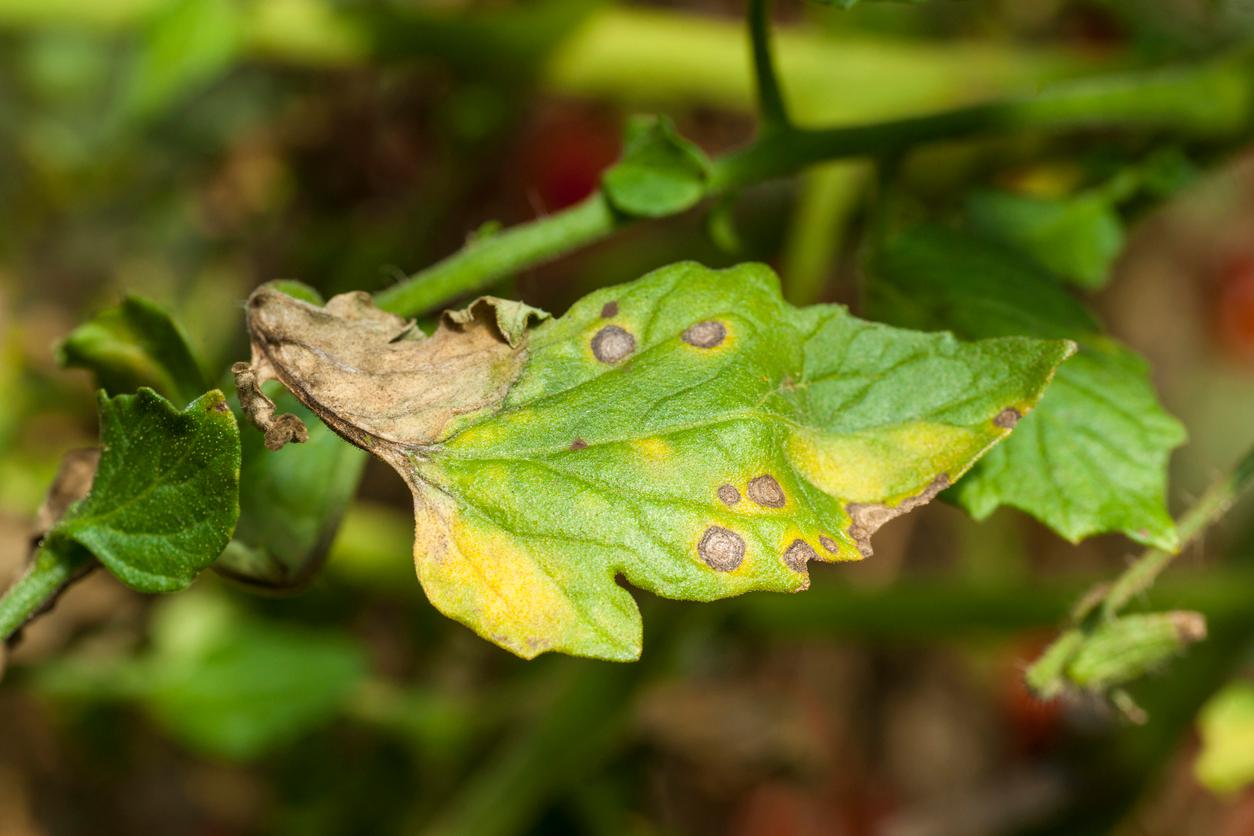
How often are you watering?
Take a look at where the leaves are yellow. If it’s toward the base of the plant, and only impacting a few leaves, it could be that they’re not getting the same sunlight as the top of the plant. Pruning them away can do the trick.
If there are yellow leaves throughout the plant where there weren’t before, you may want to adjust your watering habits. This can be a sign of over- or under-watering.
Tomato plants in the garden have different needs than those in a container.
Garden tomatoes typically require watering once daily in the morning, and one to two inches of water a week. Tomatoes plants in containers will require more because of the heat that is trapped in the containers. Water them in the morning and check them in the afternoon.
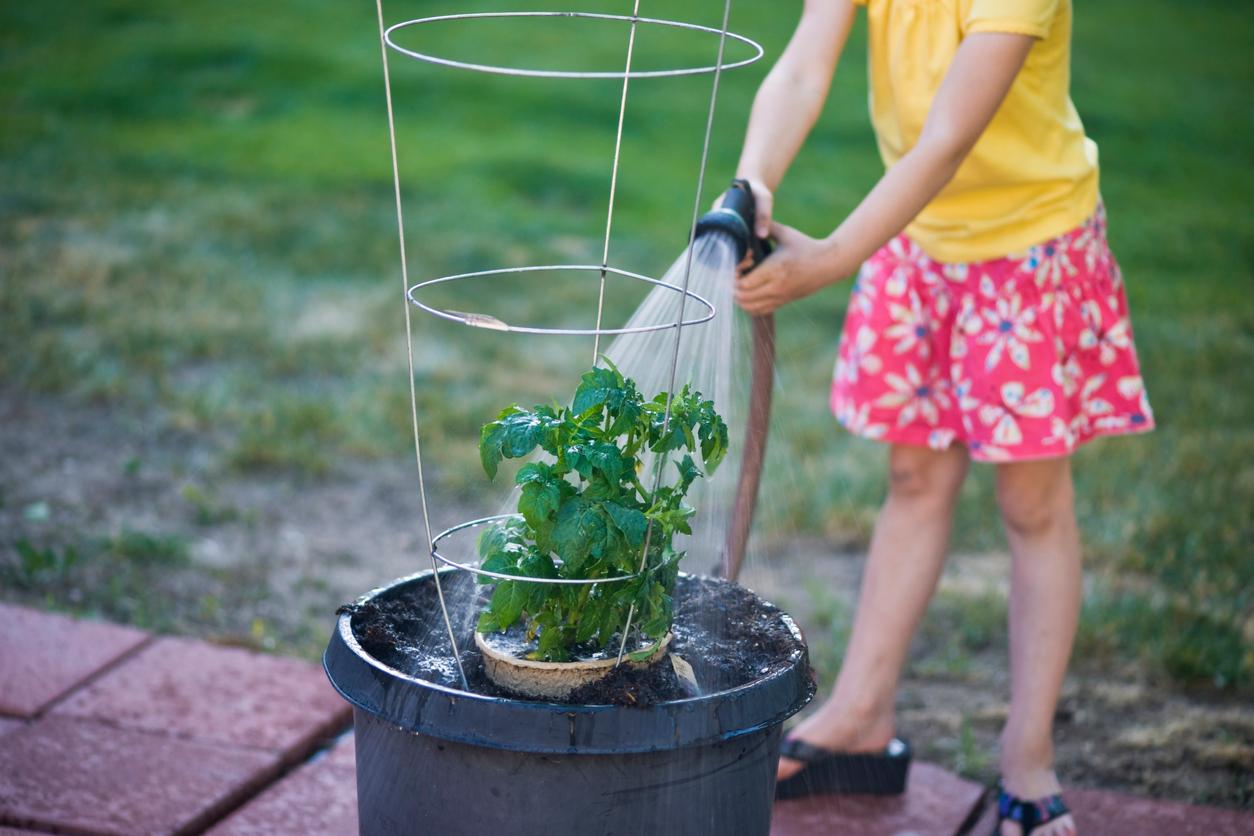
But yellow leaves on tomatoes could also signal a nitrogen deficiency.
This is less common, but if you’ve tested other methods and are still experiencing yellow leaves, it could be a sign of nitrogen-deficient soil, as plants with enough nitrogen are usually a healthy green.
Nitrogen-deficient soil can be corrected in a number of ways.
“To correct a nitrogen deficiency, consider planting nitrogen-rich plants like beans and peas nearby,” the Permaculture Research Institute shares. “Adding used and rinsed coffee grounds to the soil to promote nitrogen production. Rinsing the grounds will not affect acid levels of the soil.”
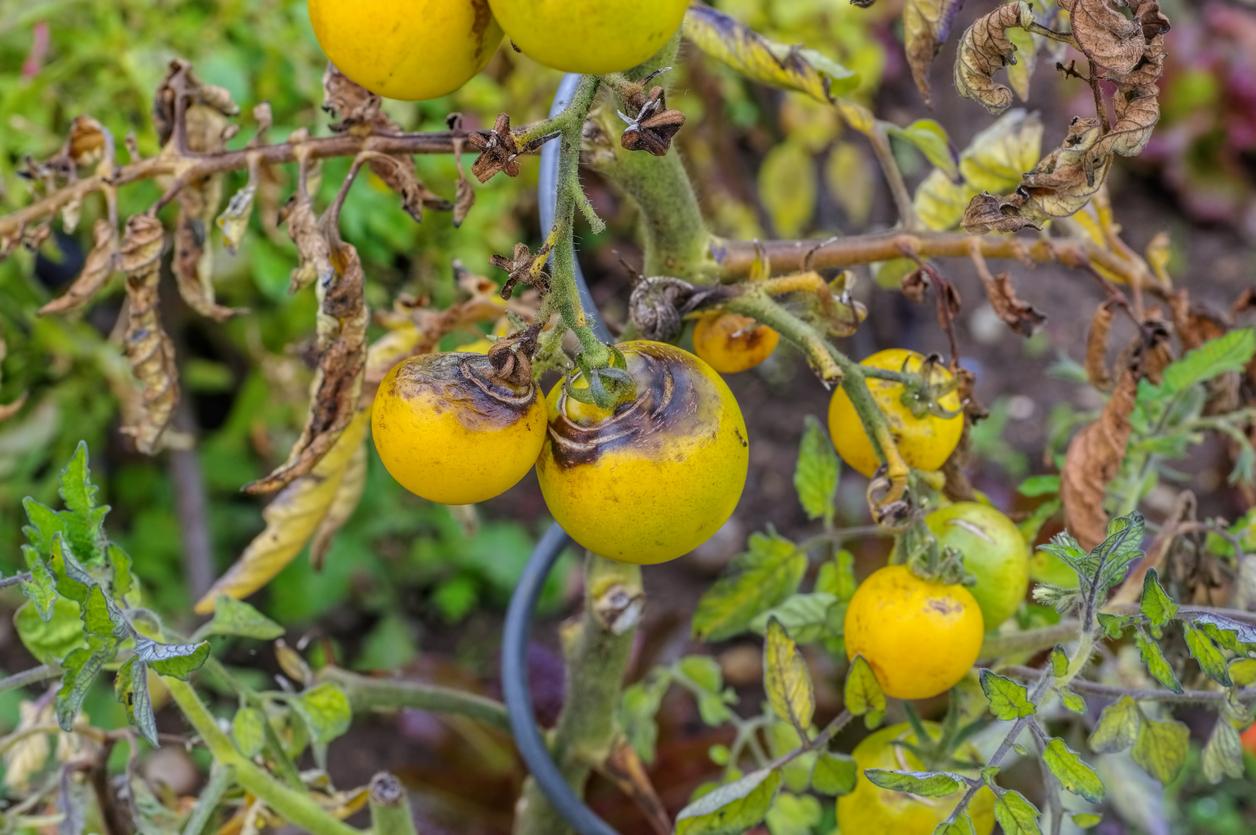
Though far less common, it could also be a pest or disease issue.
There are plant diseases known as Curly Top virus, Ringtop virus, and others that can give you tomato plants a yellowed, curled appearance. They can also affect beets, potatoes, spinach, beans, peppers, and more. If you notice that yellow is impacting more than just your tomato plant, this is something to consider.
And in the pest department, Aphids love plant vegetation, as do Tomato hornworms, and even slugs and snails. Usually there are other signs that accompany a garden pest problem, like holes eaten through the fruit or leaves, or spotting the insects themselves on the plant.
Hopefully this helps you troubleshoot your tomato plant issues and you’ll be growing and harvesting healthier plants in no time!